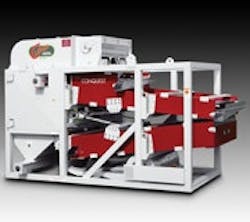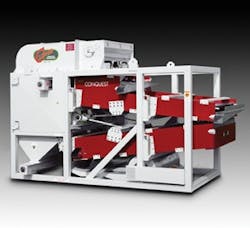Seed Demands Sprout Design Innovation
The A.T. Ferrell Company (www.atferrell.com) in Bluffton, Indiana, has a history going back to 1869, when Capt. John E. Smith crafted the first hand-operated Clipper separator. In 1891, Smith sold his business to A.T. Ferrell, who by 1948 built it into one of the world's largest air-screen seed and grain separator and conditioning machinery suppliers.
A.T. Ferrell diversified over the years—acquiring Ross Machine & Mill Supply in the 1960s—and now the Ferrell-Ross product line includes mills for everything from cracking nuts and grains to flaking cereals and barley and grinding peppercorns.
As the recent economic downturn took hold, the company needed ways to reduce operating costs for its customers. Economic conditions put a tremendous strain on clients in the beef, poultry and pork industries, for example, who faced not only reduced demand for their meat products but also increased grain prices.
"We needed to reduce the operating costs for our clients in order for them to survive economic challenges coming from all directions," says Allen Gager, a design engineer and CAD manager with A.T. Ferrell.
The company employs three mechanical engineers and one electrical engineer, and all design work is done on Autodesk AutoCAD Inventor Suite and AutoCAD Inventor Professional 3D digital prototyping software. With AutoCAD, the engineers are able to design better, more efficient machines in less time, according to Gager.
This software has helped the designers handle a seemingly endless variety of machine configurations for the array of materials processed by end users. For example, the company's Clipper separator could be tasked with sorting premium grass seed, removing all foreign matter or poor quality seed.
This is accomplished by combining aspiration, which lifts and removes the light material from the seed mass, and scalping, during which good seed drops through openings of a perforated metal screen while the trash flows over the screen to a discharge chute.
Since moving to Autodesk's software, the company has reduced the need for prototypes considerably, according to Gager. "The company no longer has to cut metal to prove the feasibility of a design, improving its ability to reuse designs and components."
Using a PLC-based controls approach, the automation capabilities on A.T. Ferrell's machines vary considerably, depending on the needs of its users. "One customer might use our machine in a completely automated process," says Daniel Johnson, engineering manager. "Another customer half way around the world might use the same machine in the same process, but with very little automation."
Johnson declines to comment on specific controls technology plans, but he concedes that the future will likely include increased connectivity for real-time off-site monitoring of rural installed machinery.


